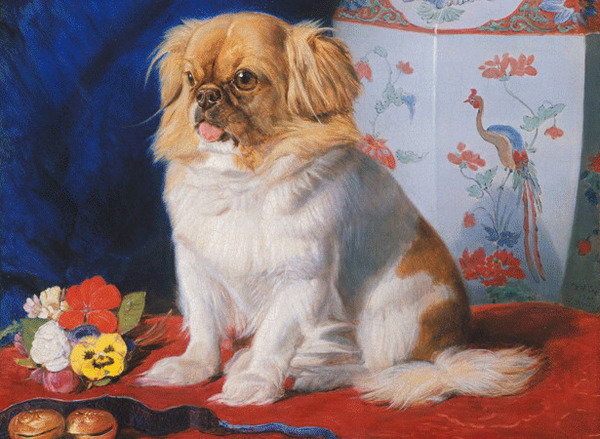A Hundred Years of Shame
dal 5/3/2015 al 9/5/2015
Segnalato da
Cai Hui
Chen Shaoxiong
James T. Hong
Hu Xiangqian
Huang Xiaopeng
Kao Chung-Li
Meiro Koizumi
Kwan Sheung Chi
Lai Chih-Sheng
Firenze Lai
Liao Guohe
Song Ta
Inga Svala Thorsdottir
Wu Shanzhuan
Wong Wai Yin
Yang Jiechang
Trevor Yeung
Zhang Peili
Zhou Tiehai
Chang Tieh-Chih
Amy Cheng
Jeph Lo
5/3/2015
A Hundred Years of Shame
Para Site Art Space, Hong Kong
'Songs of Resistance and Scenarios for Chinese Nations' includes artists from Hong Kong to Taiwan and revisits a disobedient intellectual spirit under the current social conditions in the region.

Curated by: Cosmin Costinas Anthony Yung
Para Site, Hong Kong's leading contemporary art center and one of the oldest and most active independent art institutions in Asia, is opening in a larger new venue in North Point/Quarry Bay, Hong Kong. Para Site's momentous move reflects not only the institution's growth, but also its engagement with Hong Kong's complex society. The new venue is set in one of the densest places on Earth and one of the most socially diverse neighborhoods of Hong Kong. North Point holds a special place in the city's history, having been at the core of many social transformations and political movements over the past half a century.
The inaugural exhibition at Para Site's new home, A Hundred Years of Shame – Songs of Resistance and Scenarios for Chinese Nations, includes artists from Hong Kong, Taiwan, mainland China and beyond, and revisits a disobedient intellectual spirit under the current social and ideological conditions in the region. The invited artists often employ satirical, subversive, and original takes on history and the contemporary, helping to expose the dangers and clichés mobilized by nationalism's rise in China, as well as seeking for politics of the everyday that can move past the deadlocks within today's reality. A Hundred Years of Shame includes new and existing works by Cai Hui, Chen Shaoxiong, James T. Hong, Hu Xiangqian, Huang Xiaopeng, Kao Chung-Li, Meiro Koizumi, Kwan Sheung Chi, Lai Chih-Sheng, Firenze Lai, Liao Guohe, Song Ta, Inga Svala Thorsdottir and Wu Shanzhuan, Wong Wai Yin, Yang Jiechang, Trevor Yeung, Zhang Peili, and Zhou Tiehai. It also features the recording studio of the fictional label Xi Kang Records, named after the subversive scholar and musician of the Three Kingdoms period and thus attesting for dissent's long history and crucial position in Chinese culture. The label represents a wide variety of music of discontent from across the Chinese-speaking world, with selections by sound culture and independent music researchers and curators Chang Tieh-Chih, Amy Cheng, and Jeph Lo; and independent musicians Lam P (My Little Airport), Mei Er (Top Floor Circus), and Wutiaoren. Two rooms within the exhibition, the Academy of Shame and the Academy of Humiliation, display collections, archives, and libraries, with a special contribution from abroad by the Department of Mimetic Ignominy (Russia), devised by Ekaterina Degot and David Riff.
The English title of the exhibition adapts the phrase "A Century of National Humiliation," a founding mantra of Chinese national discourse, which refers to a period that started with the First Opium War and ended either with the liberation from Japanese Occupation, with the proclamation of The People's Republic of China, or with the handover of Hong Kong, if at all. This powerful and still ubiquitous founding myth practically equates the entire Chinese experience of modernity with a sense of humiliation at the hands of the modernized Western world. But it also presents a heroic vision of China's historical purpose, where the entire nation's current and future ambitions are seen as efforts to overcome the oppression and exploitation, to finally reclaim her national dignity, and perhaps even return the humiliation. From the policies of opening up to the world of the Deng era to the current formulation of national rejuvenation, the different ideological paths taken by parts of the Chinese world are only means to achieve this higher goal.
This tremendous collective task is an effective pretext for a monolithic vision of society. On the contrary, the exhibition looks at the different spaces of dissent, of opposition or simply of plurality experienced in the different parts of the Chinese world. "Scenarios for the Chinese Nations" signifies not only the existence of various ideas opposed to a singular Chinese ideology, but acknowledges the possibility of coexistence of multiple imaginaries and of heterogeneity within the future of China.
The Chinese title, borrowed from Hu Xiangqian's work, in the dialect of Leizhou, Guangdong, literally meaning "The Edge of the World," is a phrase often used ironically by the people from this small provincial town to describe their own situation. This can be read as an antagonism to the "Middle Kingdom," to the idea of centrality in China's self-definition. But it is also evoking of the exhibition's method: a personal angle used to discuss the relationship between the individual, the nation, and the world, a progressive self-consciousness needed to transcend shamefulness.
The works displayed in this exhibition are often informed by feelings of shame and unease, but of a different nature than the officially mandated standard of honor and disgrace. Instead, the urgency that these artists respond to is related to how artistic creation functions and fulfills its stated values under drastic social transformation. So the question in front of us is: what remains to be done in reaction to the growing absurdity in Chinese society and its national ideology, where any possible means of significant social participation and criticism are being dismissed as unheard of, unrealistic or even unpatriotic?
Image: Firenze Lai, "This is not yours.," 2015. Oil on canvas. Courtesy the artist
Opening: March 6, 6–9pm
Para Site
22/F Wing Wah Industrial Building
677 King's Road
Quarry Bay
Hong Kong
Hours: Wednesday–Sunday, 12–7pm
(extended hours during Art Basel Hong Kong: March 13–17, 10am–8pm)



